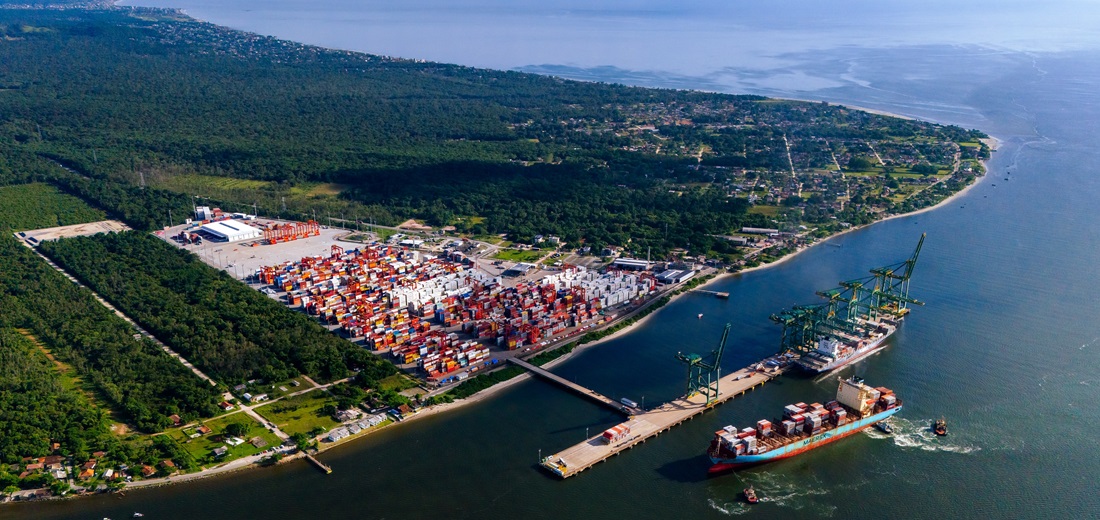
Exporter Tests New Routes for Cotton Shipments
Sep, 11, 2024 Posted by Sylvia SchandertWeek 202437
Operators and port terminals in Brazil are seeking to diversify cotton export routes as the country increases its sales to international markets. The goal is to create new shipping points as alternatives to the Port of Santos, located on the São Paulo coast, through which nearly all of the national cotton is exported, with China being the primary destination.
“We study and maintain any route that makes sense,” says Thaiz Chaiben, Foreign Trade and Logistics Manager at the Chinese trading company Cofco, which exported 400,000 tons of cotton from Brazil last year.
The company still relies on Santos as the main point for shipping cotton, which is transported in containers. However, the increase in cotton production in Brazil and the country’s growing share in the international market — now leading global exports — are prompting Cofco to explore other logistical routes.
“Santos has more available ships and more maritime routes in and out, making it consistently more competitive. Additionally, it has a supply of shipping companies not found elsewhere in the country. Despite this, the cotton harvest is growing and there is already significant congestion in Santos with the current supply,” she explains.
Last year, Cofco began testing shipments through the Port of Itapoá in Santa Catarina. This month, a ship departed for Asia. The executive did not provide details on the volumes or projections for the use of the Southern route this year but considers it competitive and efficient.
“Despite the greater distance from the cotton’s origin, the overall costs at Itapoá are lower, for example, for stuffing [full container loading],” she adds, noting that terminals in the North and Northeast are less competitive due to insufficient ship availability.
The following chart shows Brazil’s cotton exports in containers from January 2022 and June 2024, according to information derived from DataLiner, Datamar’s leading maritime intelligence service.
Cotton Exports from Brazil | Jan 2022 – Jun 2024 | TEUs
Source: DataLiner (click here to request a demo)
New Route
Cofco’s initiative aligns with the strategy of Porto Itapoá, which manages the Santa Catarina container terminal. The port operator has implemented a project specifically for cotton export, aiming to establish itself as a key shipping point for the product.
“We identified this cotton flow as an opportunity. Brazil is the world’s largest exporter, with a significant portion of the cargo going to Asia. After discussing with some clients, we invested in internal infrastructure at the terminal, following all standards to preserve cotton quality,” says Felipe Fioravanti Kaufmann, Business Development and Customer Experience Director at Porto Itapoá.
In early July, Porto Itapoá announced the completion of a stuffing structure for the commodity. According to Kaufmann, the initiative is in the pilot phase to assess the viability of the dedicated operation and, depending on interest and demand from trading companies and shippers, scale up operations.
The port authority believes Itapoá could become a viable alternative to Santos for cotton shipments. The Santa Catarina port features a warehouse exclusively for receiving cotton in the primary zone, without the need for retro-port operations. Equipment and personnel have been allocated for cotton handling. Customs procedures are carried out on-site, and the cargo and container are then loaded onto the ship.
In the first two months of dedicated operations, Itapoá shipped around 500 containers of cotton. The projection is to total between 2,000 and 3,000 by the end of the year. The port administration estimates that, at full capacity, it could reach up to 1,000 units per month.
Kaufmann attributes the viability of Itapoá’s cotton logistics route, in part, to a high supply of return freight, which enhances the competitiveness of the Santa Catarina terminal compared to Santos. According to the executive, carriers arriving with cotton from states such as Mato Grosso, Bahia, or Goiás return with contracted freight and loaded trucks.
He notes that the pilot phase will continue until the end of the year to evaluate the initial months of operation. “We will sit down with clients to assess the quality of services, customer service. After this analysis, we will seek solutions in both primary and even secondary zones to increase volumes,” he adds.
Global Leadership
From January to June this year, Brazil exported 1.392 million tonnes of cotton, generating revenue of $2.68 billion, according to the National Association of Cotton Exporters (Anea). In the same period in 2023, the exports totaled 424,500 tons, valued at $796.73 million.
As one of the world’s four largest producers (alongside the United States, India, and China), Brazil has surpassed the U.S. in external sales and has taken the lead in global cotton trade.
Although acknowledging that there is room for new export routes, Anea President Miguel Faus emphasizes the importance of the Port of Santos in the cotton logistics system and says the port has been receiving investments to bolster operations. More than 90% of the cotton is shipped through the São Paulo port.
He believes Brazil will continue to increase cotton production and export, paving the way for the diversification of logistical routes. However, Faus views the operation as complex, relying on long-term investments and ensuring consistency.
“There needs to be an empty container — and cotton is exported in 40-foot containers — and regular shipping lines. It will happen gradually. Exporters and traders will always seek the most efficient option. It has to make economic sense and be efficient for stuffing, loading, and the ship to depart,” he says.
Source: Globo Rural
-
Ports and Terminals
Jul, 06, 2021
0
MINFRA announces Santos privatization model is ‘practically signed’
-
Ports and Terminals
Dec, 13, 2020
0
Cargo handling at the Port of Imbituba grows 12.4% in November
-
Other Logistics
Oct, 16, 2021
0
Brazil’s Nortec to export raw materials to China and the US in 2022
-
Meat
Nov, 22, 2024
0
French retail group expands boycott on Brazilian beef



